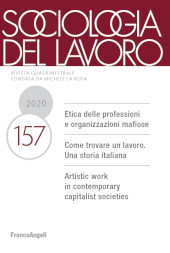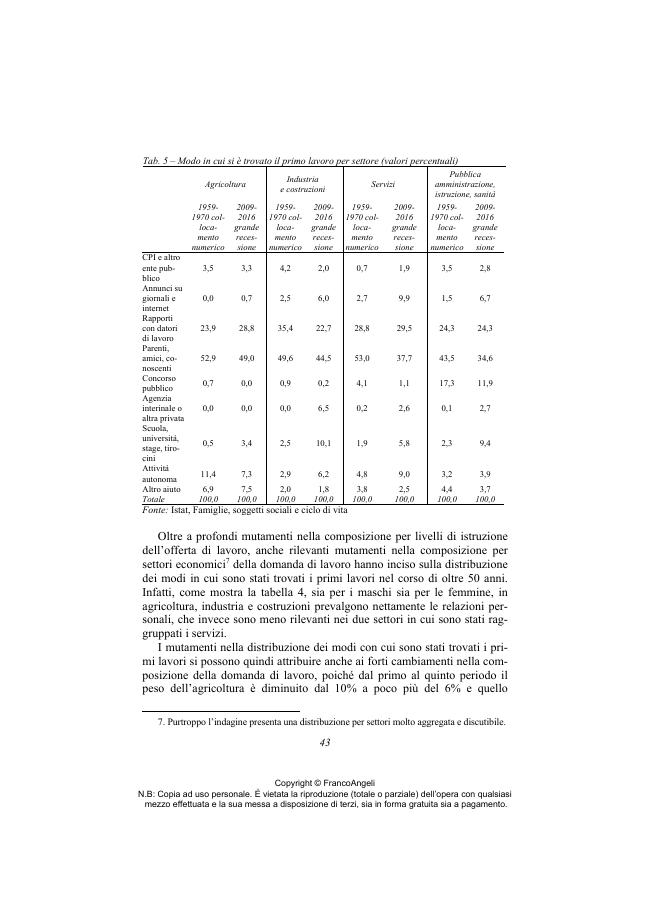Come trovare un lavoro : una storia italiana
33-52 p.
Dopo aver sinteticamente illustrato come è cambiata la regolazione normativa delle assunzioni in Italia dall'inizio del secolo scorso, l'articolo presenta come sono cambiati i modi di trovare lavoro negli ultimi 50 anni grazie a un'indagine longitudinale retrospettiva Istat. Con scarse relazioni con i mutamenti normativi, i principali cambiamenti sono stati: una lenta riduzione dei lavori trovati grazie a parenti, amici e conoscenti e per contro un aumento del ricorso ad annunci su giornali e internet, ad agenzie del lavoro private e al supporto di strutture formative (scuole e stage), mentre sono rimasti costanti i rapporti con datori di lavoro e hanno avuto un andamento curvilineo i concorsi pubblici e il ricorso a uffici pubblici. Tuttavia, questi mutamenti sono stati dovuti a un effetto di composizione, poiché per gli stessi livelli di istruzione e per gli stessi settori la distribuzione dei modi con cui è stato trovato il lavoro non è cambiata granché.
L'ultimo paragrafo confronta alcuni esiti dei tre tipi di regolazione dell'incontro tra domanda e offerta di lavoro: mercato, reti e organizzazioni. [Testo dell'editore].
After briefly illustrating how the legal regulation of hiring in Italy has changed since the beginning of the last century, the article presents how the ways of finding a job in the last 50 years have changed thanks to an Istat longitudinal retrospective survey. With little relation to regulatory changes, the main changes have been: a slow reduction in the number of jobs found thanks to relatives, friends and acquaintances and, on the other hand, an increase in the use of newspaper and internet advertisements, private employment agencies and the support of training facilities (schools and internships), while direct relations with employers have remained constant and there has been a curvilinear trend in public competitions and the use of public offices. However, these changes were due to a composition effect, since for the same levels of education and the same sectors the distribution of the ways in which jobs were found has not changed much.
The last paragraph compares some of the outcomes of the three types of job matching regulation: market, networks and organisations. [Publisher's text].
Ist Teil von
Sociologia del lavoro : 157, 2, 2020-
Artikel aus derselben Ausgabe (einzeln erhältlich)
-
Informationen
ISSN: 1972-554X
THEMENBEREICHE
KEYWORDS
- Occupazione, trovare lavoro, Italia, relazioni personali
- Employment, job finding, Italy, personal relations



